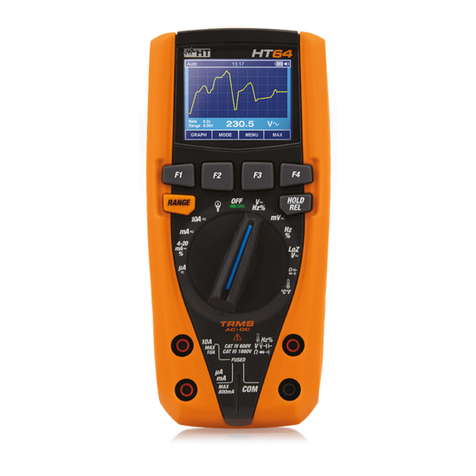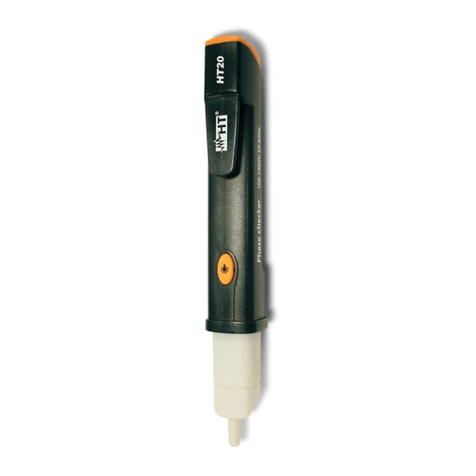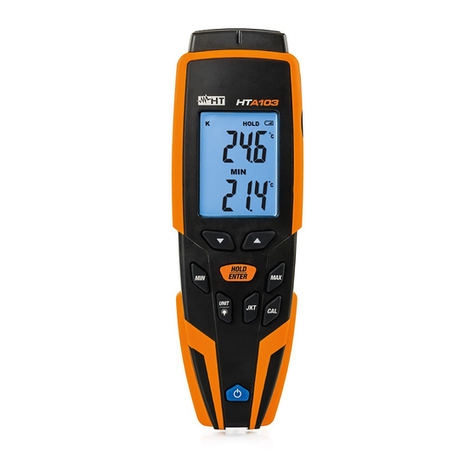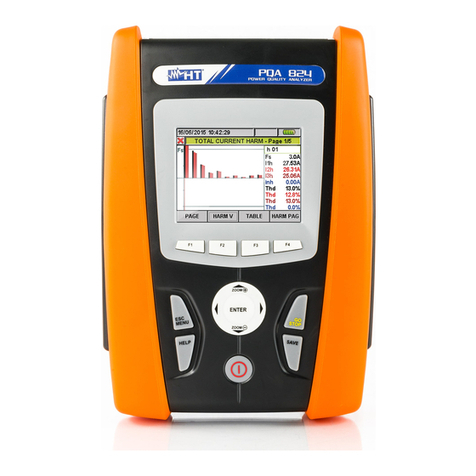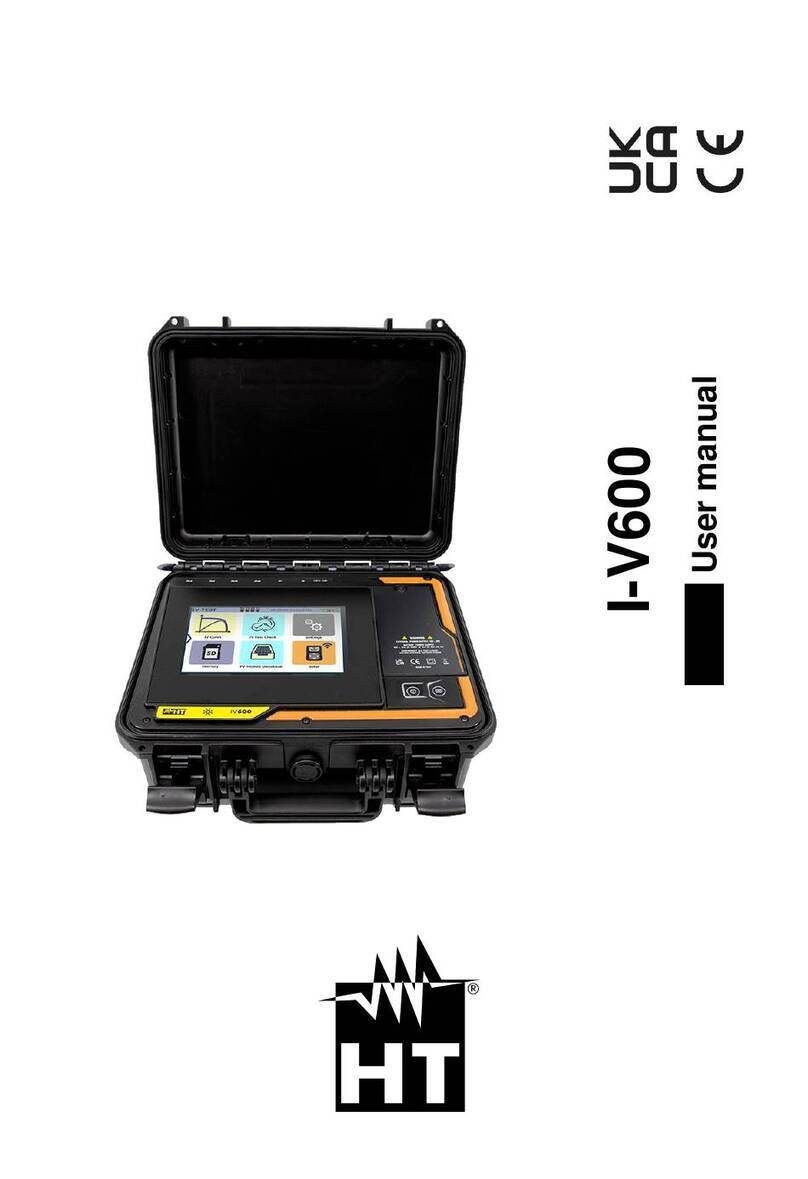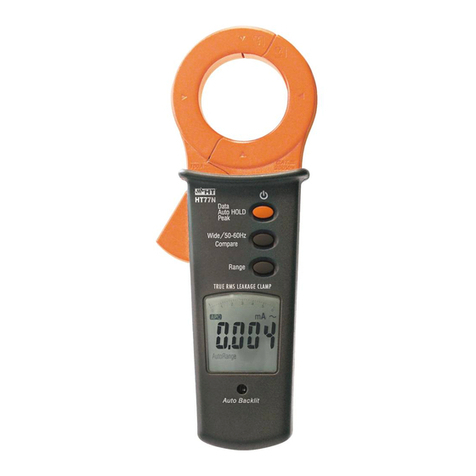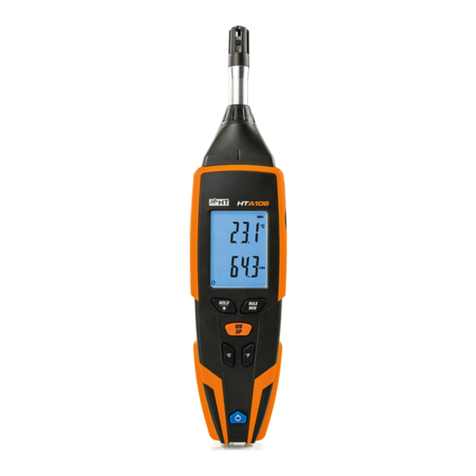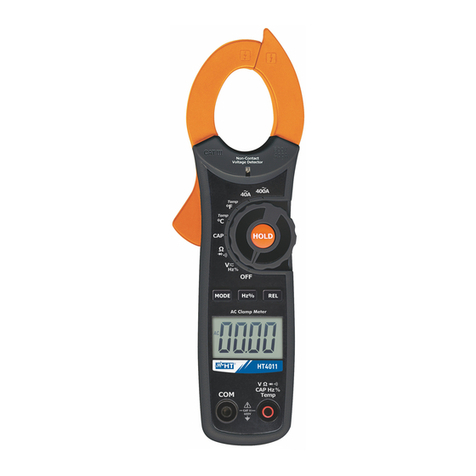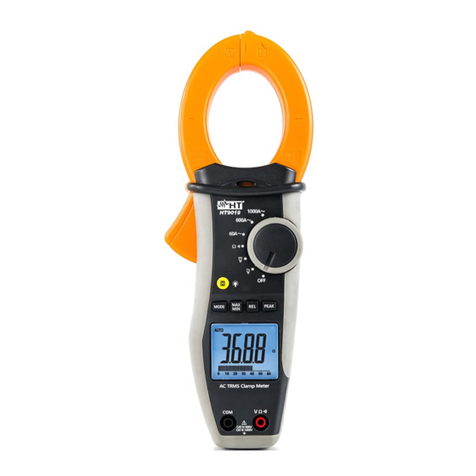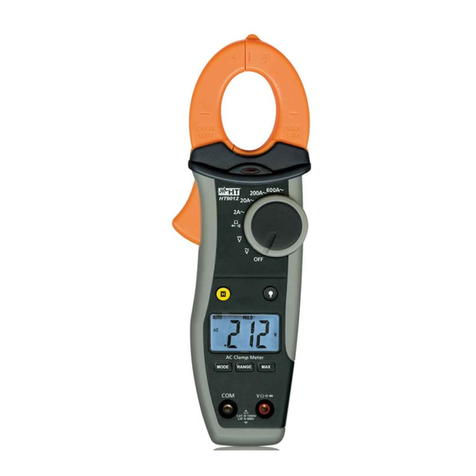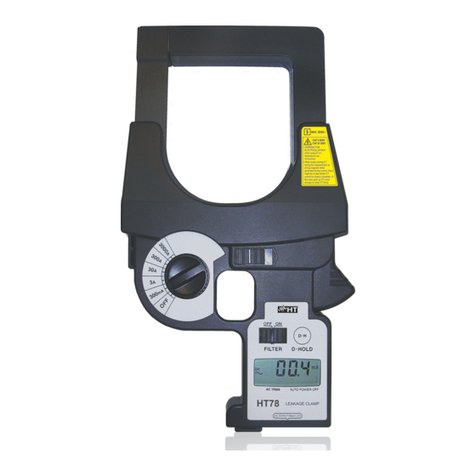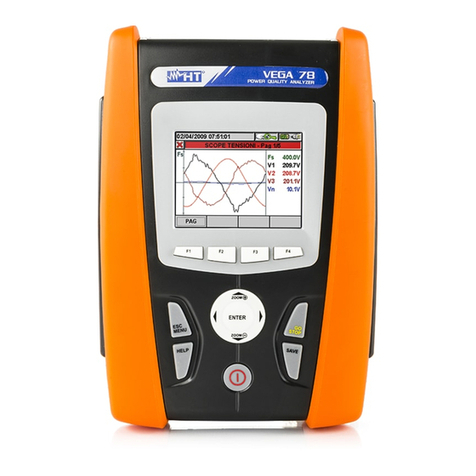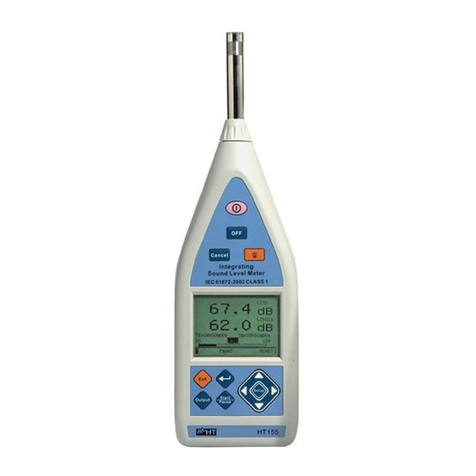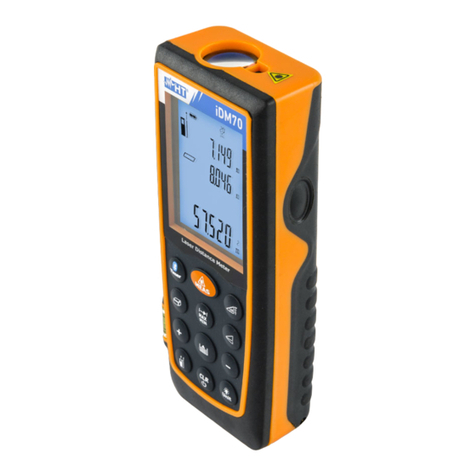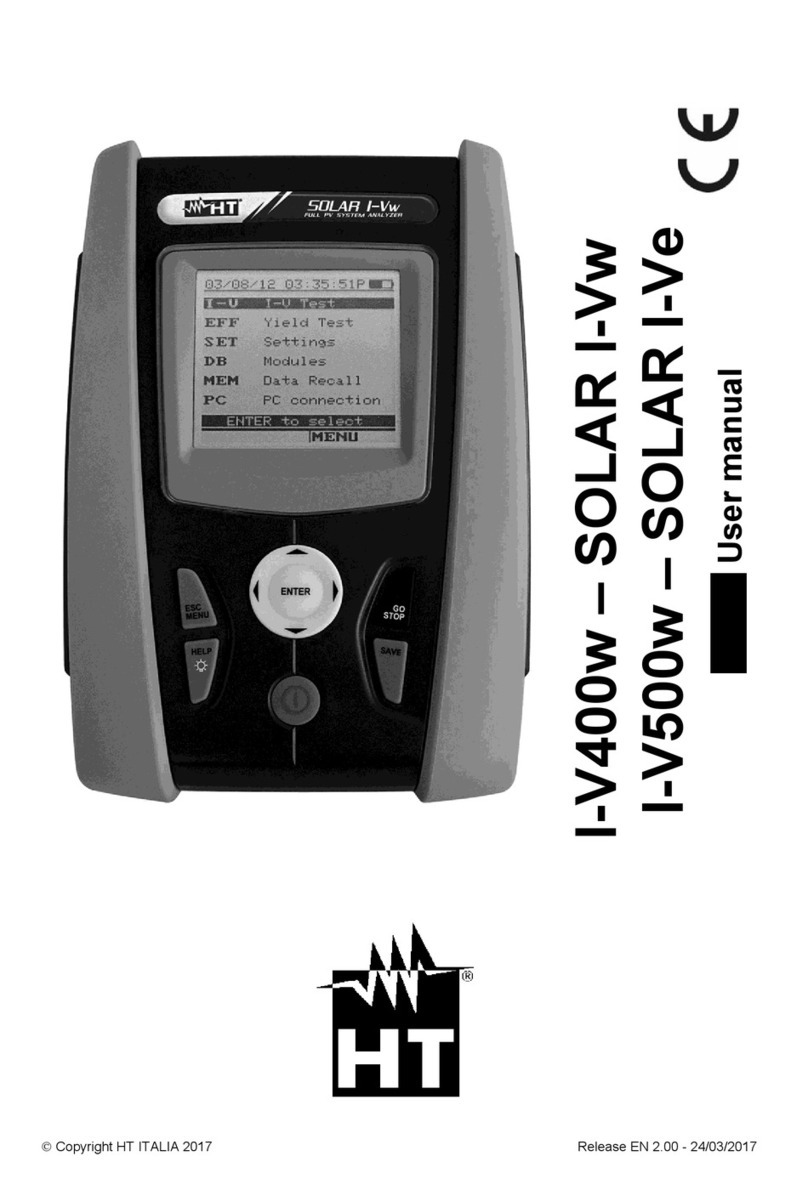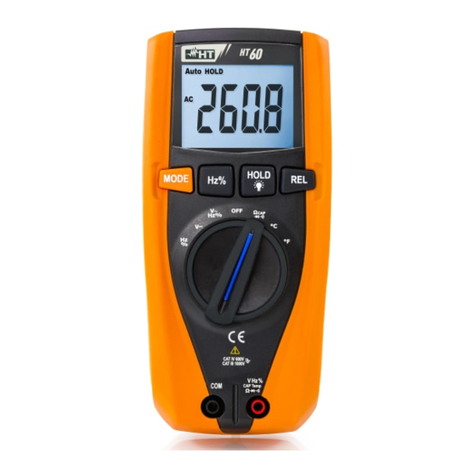
HT9023
EN - 1
TABLE OF CONTENTS
1.PRECAUTIONS AND SAFETY MEASURES ...............................................................3
1.1.Preliminary instructions ..................................................................................................... 3
1.2.During use......................................................................................................................... 4
1.3.After use............................................................................................................................ 4
1.4.Definition of measurement (overvoltage) category............................................................ 4
2.GENERAL DESCRIPTION ...........................................................................................5
2.1.Measuring average values and TRMS values................................................................... 5
2.2.Definition of true root mean square value and crest factor................................................ 5
3.PREPARATION FOR USE ...........................................................................................6
3.1.Initial checks...................................................................................................................... 6
3.2.Instrument power supply ................................................................................................... 6
3.3.Storage.............................................................................................................................. 6
4.NOMENCLATURE........................................................................................................7
4.1.Instrument description....................................................................................................... 7
4.1.1.Alignment marks ................................................................................................................................ 7
4.1.2.Hand protection ................................................................................................................................. 8
4.1.3.Indication of the conventional direction of Current............................................................................. 8
4.2.Function keys description.................................................................................................. 9
4.2.1.F1, F2, F3, F4/OK keys ..................................................................................................................... 9
4.2.2.H/ESC/ key .................................................................................................................................... 9
4.3.Initial screen ...................................................................................................................... 9
4.4.Instrument settings.......................................................................................................... 10
4.4.1.General menu .................................................................................................................................. 10
4.4.2.Date/Time menu .............................................................................................................................. 10
4.4.3.Log menu......................................................................................................................................... 11
4.4.4.Continuity menu............................................................................................................................... 11
4.4.5.Memory REC – Deleting saved data ............................................................................................... 11
4.4.6.Memory IRC..................................................................................................................................... 12
5.OPERATIVE INSTRUCTIONS ...................................................................................13
5.1.AC Voltage detection....................................................................................................... 13
5.2.DC Voltage measurement ............................................................................................... 13
5.3.AC and AC+DC Voltage measurement........................................................................... 15
5.3.1.Voltage Harmonics measurement ................................................................................................... 17
5.3.2.Phase Sequence and Phase Conformity with 1 wire ....................................................................... 18
5.4.DC Current measurement ............................................................................................... 23
5.5.AC and AC+DC Current measurement ........................................................................... 25
5.5.1.Current Harmonics measurement.................................................................................................... 27
5.6.Dynamic Inrush current measurement ............................................................................ 28
5.7.DC Power and Energy measurement.............................................................................. 31
5.8.AC and AC+DC Power and Energy measurement ......................................................... 35
5.9.Resistance and Continuity test measurement................................................................. 41
6.CONNECTION OF INSTRUMENT TO PC AND MOBILE DEVICES..........................43
6.1.Download saved data...................................................................................................... 43
6.2.Real-Time readings ......................................................................................................... 46
6.3.Connection to mobile devices ......................................................................................... 48
7.MAINTENANCE .........................................................................................................49
7.1.General information......................................................................................................... 49
7.2.Battery replacement ........................................................................................................ 49
7.3.Cleaning the instrument .................................................................................................. 49
7.4.End of life ........................................................................................................................ 49
8.TECHNICAL SPECIFICATIONS ................................................................................50
8.1.Technical characteristics ................................................................................................. 50
8.1.1.Reference guidelines ....................................................................................................................... 52
8.1.2.General characteristics .................................................................................................................... 52
8.2.ENVIRONMENT.............................................................................................................. 53
8.2.1.Environmental conditions for use..................................................................................................... 53












